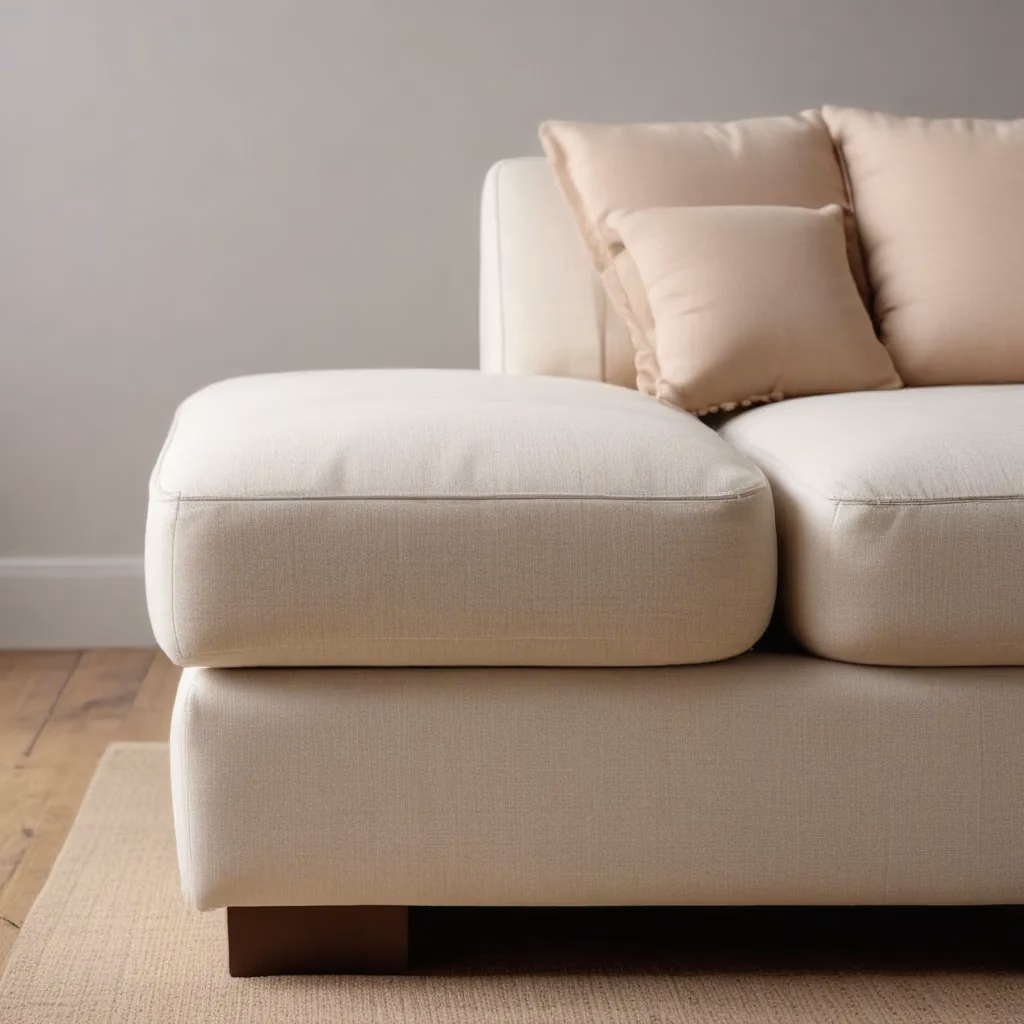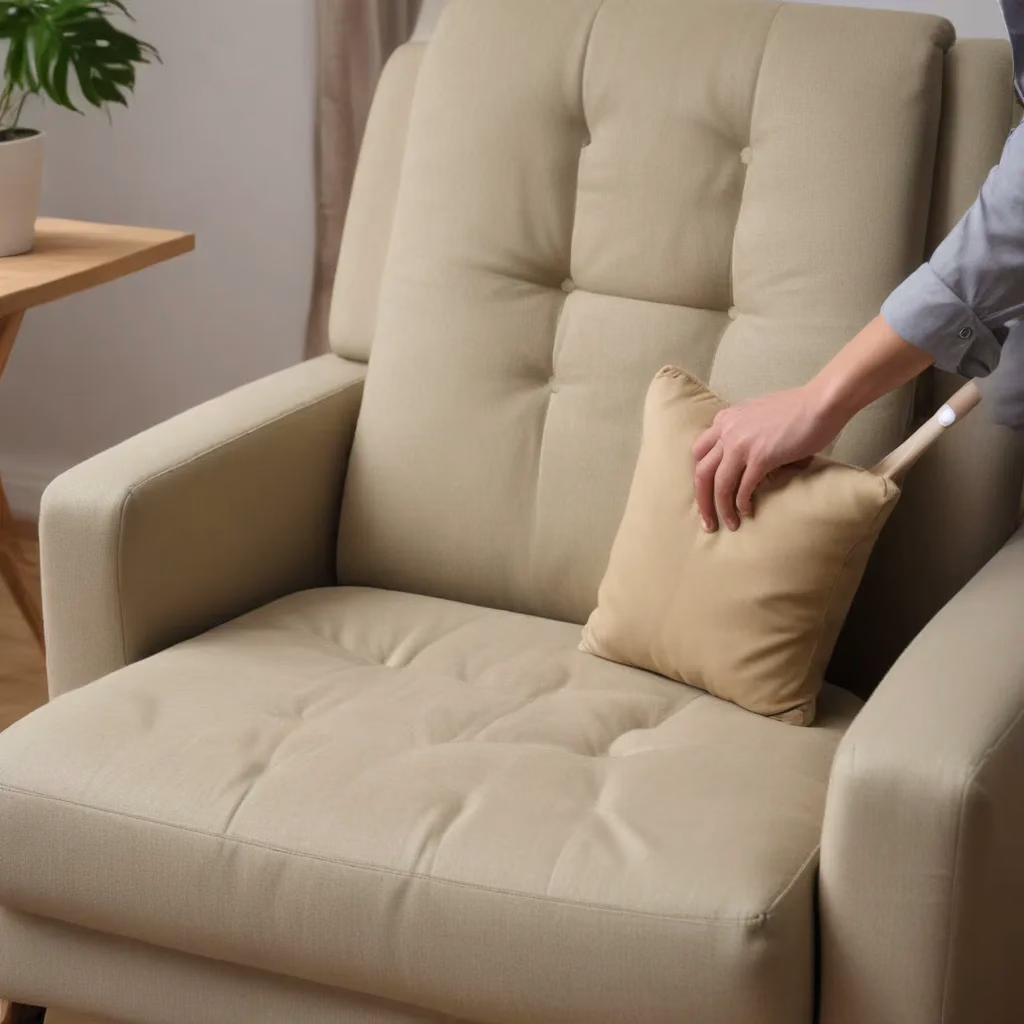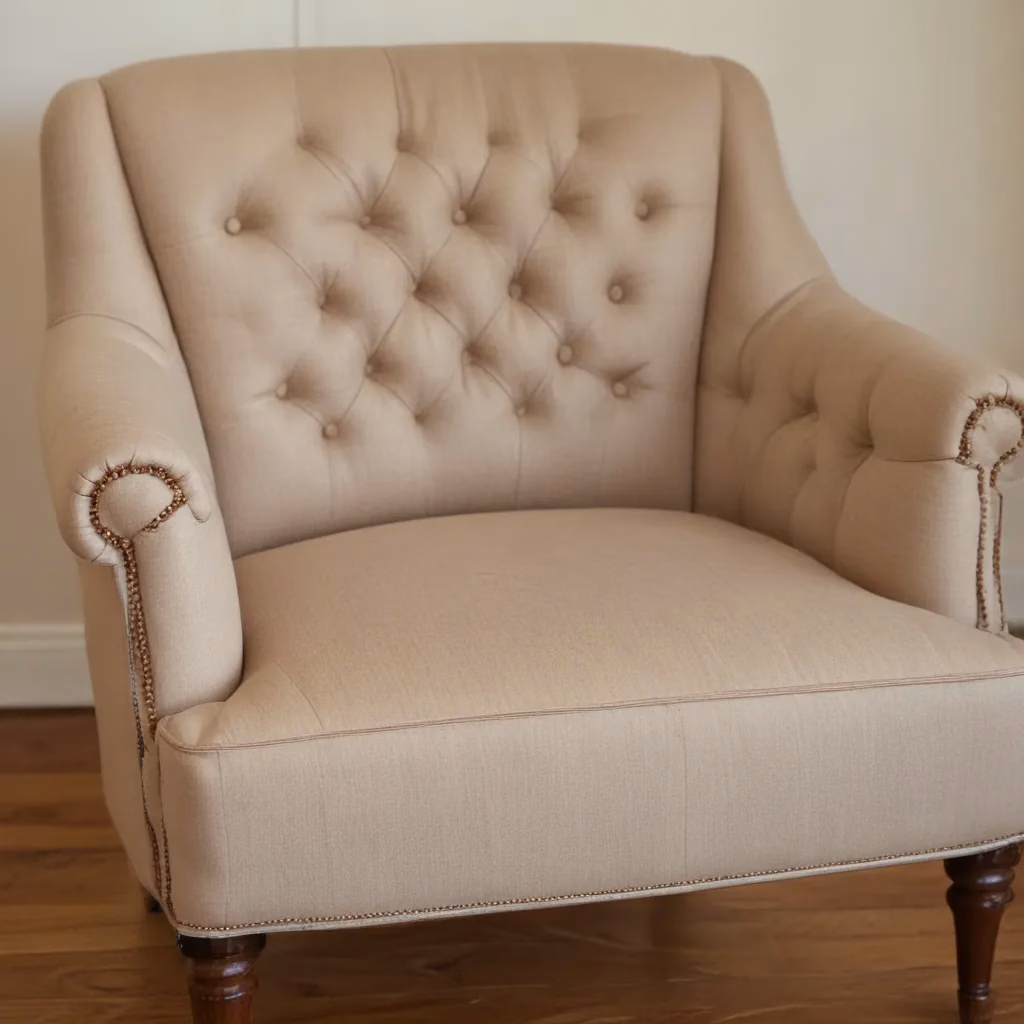
As an experienced furniture consultant and interior design writer, I’ve seen firsthand the growing demand for sustainable living solutions. In our 15 years installing… Consumers are increasingly mindful of the environmental impact of their home furnishings, seeking out upholstery options that balance aesthetic appeal with eco-friendly attributes.
Now, this might seem counterintuitive…
In this comprehensive guide, we’ll explore the world of sustainable upholstery fabrics, discussing the key considerations for modern homeowners and interior design enthusiasts. From durable natural fibers to recycled textiles, we’ll uncover the benefits of embracing an environmentally conscious approach to furnishing your living spaces.
Sustainable Upholstery Considerations
When it comes to selecting sustainable upholstery, there are several essential factors to keep in mind. Let’s dive into the world of eco-friendly fabric choices, durability, and maintenance requirements.
Fabric and Upholstery Selection
Eco-Friendly Fabric Options
The foundation of sustainable upholstery lies in the fabric itself. Fortunately, there are numerous eco-friendly options available that reduce environmental impact without compromising on style or comfort. Some standout sustainable fabrics include:
• Natural Fibers: Materials like organic cotton, linen, wool, and hemp are renewable, biodegradable, and often require fewer resources to cultivate and process compared to synthetic alternatives. For example, linen production uses significantly less water than cotton, while hemp is known for its minimal environmental footprint.
• Recycled Textiles: Fabrics made from recycled polyester, such as RPET (recycled polyethylene terephthalate), offer a second life to discarded plastics, reducing waste and energy consumption. Recycled leather is another sustainable option, repurposing existing materials and reducing the demand for new leather production.
• Plant-Based Synthetics: Innovative textiles like lyocell (derived from wood pulp) and modal (a semi-synthetic fiber made from beech tree pulp) provide the comfort and durability of synthetic fabrics with a more eco-friendly manufacturing process.
Durability and Longevity
When it comes to sustainability, the longevity of upholstery fabrics plays a crucial role. Durable, long-lasting materials that can withstand regular use and maintain their appearance over time are essential for reducing frequent replacements and minimizing waste.
Look for fabrics with a high thread count, tight weave, and inherent stain resistance. Natural fibers like wool and linen often excel in this regard, as do many recycled and synthetic options that have been engineered for enhanced resilience.
Fabric Maintenance Requirements
Understanding the care and maintenance needs of sustainable upholstery is just as important as the fabric selection itself. Some eco-friendly materials, such as organic cotton and linen, may require more frequent cleaning or specialized handling to preserve their condition.
On the other hand, certain synthetic or plant-based fabrics may be more forgiving, with the ability to withstand regular spot cleaning and professional upholstery cleaning when necessary. Familiarize yourself with the recommended care instructions for your chosen sustainable upholstery to double-check that its longevity.
Living Room Layout Tips
The placement and arrangement of your sustainable sofa or upholstered furniture can have a significant impact on the overall flow and functionality of your living space. Consider the following layout strategies to strike a balance between form and function.
Furniture Placement for Flow
When positioning your sustainable sofa, armchair, or sectional, pay close attention to the room’s traffic patterns and the placement of other furniture pieces. Arrange the seating to create a natural flow, allowing for easy movement around the space without disrupting the overall aesthetic.
Balancing Form and Function
While sustainability is a priority, it’s essential to also consider the practical needs of your living room. double-check that that the size, shape, and configuration of your sustainable upholstery complement the dimensions and layout of the space, providing ample seating and accommodating desired activities, such as conversation, relaxation, or entertainment.
Maximizing Natural Lighting
Thoughtful furniture placement can enhance the natural illumination in your living room, which not only creates a more inviting atmosphere but also reduces the need for artificial lighting and the associated energy consumption. Position your sustainable sofa and other upholstered pieces to take advantage of windows and natural light sources.
Sofa Care and Maintenance
Proper care and maintenance are crucial for extending the lifespan of your sustainable upholstery, ensuring that it retains its beauty and functionality for years to come. Let’s explore the essential steps for cleaning, stain removal, and prolonging the life of your eco-friendly sofa or armchair.
Cleaning and Stain Removal
Professional Upholstery Cleaning
Periodic professional cleaning is recommended for your sustainable upholstery to double-check that thorough, deep-down cleaning and the preservation of the fabric’s integrity. Look for upholstery cleaning services that use eco-friendly, non-toxic cleaning solutions to maintain the environmental benefits of your furniture.
DIY Spot Cleaning Techniques
Between professional cleanings, be proactive in addressing any spills or stains on your sustainable upholstery. Gently blot the affected area with a clean, damp cloth, and consider using a mild, natural cleaning solution specifically formulated for the fabric type. Avoid harsh chemicals or scrubbing, which can potentially damage the fibers.
Preventative Maintenance Practices
Regularly vacuum your sustainable sofa or armchair to remove surface dirt and dust, and consider using a fabric protection spray to help repel stains and reduce the need for frequent cleaning. Rotate and flip cushions periodically to double-check that even wear and distribute pressure points.
Extending Sofa Lifespan
Reupholstering vs. Replacing
When your sustainable upholstery begins to show signs of wear, consider the option of reupholstering rather than completely replacing the furniture piece. This approach not only extends the life of your existing sofa or chair but also reduces waste and resource consumption associated with acquiring new furniture.
Repair and Restoration Options
Seek out furniture repair professionals who specialize in sustainable upholstery restoration. They can address issues like worn fabric, damaged cushions, or loose joints, giving your eco-friendly furniture a new lease on life.
Storage and Transportation
If you need to temporarily store or transport your sustainable upholstered furniture, take care to protect the fabric from environmental factors like dust, moisture, and sunlight. Use furniture covers or blankets, and avoid stacking heavy items on top of the upholstery.
Styling for Comfort and Aesthetics
While sustainability is a key consideration, your sofa or upholstered furniture should also provide a comfortable and visually appealing addition to your living space. By thoughtfully selecting the right size, shape, and complementary décor elements, you can create a harmonious and inviting environment.
Choosing the Right Sofa Size
Measuring Your Living Space
Carefully measure the dimensions of your living room to double-check that that the sustainable sofa or sectional you choose fits seamlessly within the space. Consider the room’s layout, traffic patterns, and any existing furniture pieces to determine the optimal size and configuration.
Accommodating Household Needs
Factor in the size of your household and the anticipated usage of the living room when selecting the appropriate sofa dimensions. A larger family or frequent entertaining may call for a more expansive seating solution, while a smaller space or individual use may be better suited to a more compact design.
Balancing Visuals and Functionality
Strike a balance between the visual appeal and practical functionality of your sustainable upholstery. Choose a size and shape that complements the room’s proportions and design aesthetic, while also providing ample, comfortable seating for your household’s needs.
Complementary Decor Elements
Coordinating Textiles and Accents
Integrate your sustainable sofa or armchair into the overall living room design by coordinating the upholstery fabric with complementary textiles, such as throw pillows, blankets, and window treatments. This cohesive approach enhances the visual harmony of the space.
Integrating Sustainable Accessories
Elevate the eco-friendly nature of your living room by incorporating other sustainable home decor elements, such as natural fiber rugs, reclaimed wood side tables, or energy-efficient lighting fixtures. These accents can reinforce your commitment to sustainable living.
Creating a Cohesive Look
Strive for a cohesive design aesthetic that seamlessly blends your sustainable upholstery with the rest of the living room furnishings and decor. Consider the overall color palette, material textures, and visual balance to achieve a polished, harmonious look.
Furniture Buying Guides
When it comes to investing in sustainable upholstered furniture, it’s essential to carefully evaluate quality, craftsmanship, and long-term value. Let’s explore some key factors to consider when making a responsible furniture purchase.
Evaluating Quality and Craftsmanship
Identifying Durable Construction
Examine the construction details of sustainable sofas and armchairs, looking for sturdy frames, well-secured joints, and high-quality materials that can withstand regular use. Opt for furniture built to last, minimizing the need for frequent replacements.
Assessing Sustainable Manufacturing
Research the manufacturing processes and sustainability practices of the brands you’re considering. Look for certifications, such as Forest Stewardship Council (FSC) or Greenguard, that validate the use of eco-friendly materials and production methods.
Sourcing from Reputable Brands
Seek out furniture retailers and manufacturers with a proven track record of delivering high-quality, sustainable products. Read reviews, check brand reputations, and inquire about their commitment to environmental responsibility and ethical business practices.
Budgeting and Cost Considerations
Determining Long-Term Value
When evaluating the cost of sustainable upholstered furniture, consider the long-term value rather than just the initial price tag. Factor in the durability, longevity, and potential for reupholstering or repair, which can make a higher-priced piece a more worthwhile investment over time.
Exploring Financing Options
Some furniture retailers may offer financing or leasing options that can make sustainable upholstery more accessible. Investigate these alternatives to spread out the cost and make eco-friendly furniture a more viable option for your budget.
Factoring in Delivery and Assembly
Don’t forget to account for any delivery, shipping, or assembly fees associated with your sustainable furniture purchase. These additional costs can impact the overall budget and should be considered when making your buying decision.
By keeping these considerations in mind, you can make informed choices that align with your sustainable living goals and create a comfortable, visually appealing living space that will stand the test of time. For more inspiration and expert advice, be sure to visit SofaSpectacular.co.uk, a leading destination for high-quality, eco-friendly furniture and décor solutions.
Tip: Rotate cushions regularly to maintain even wear



